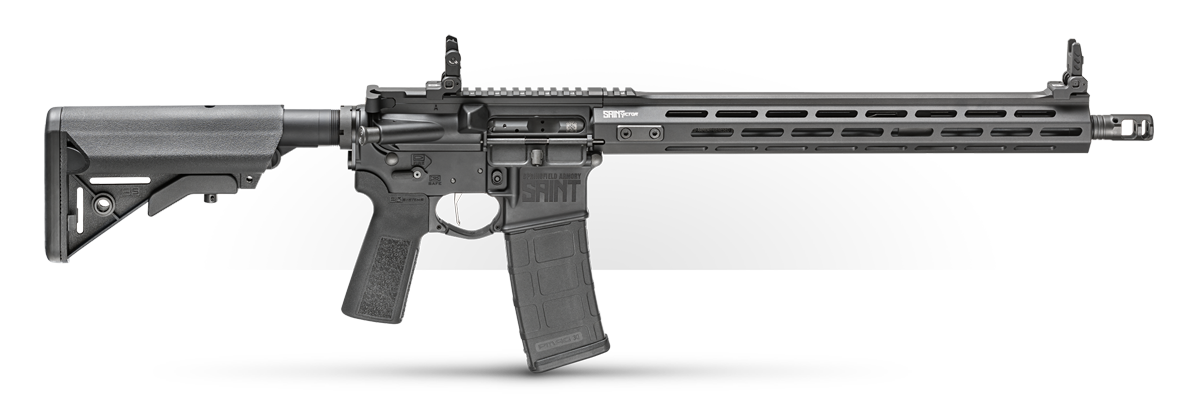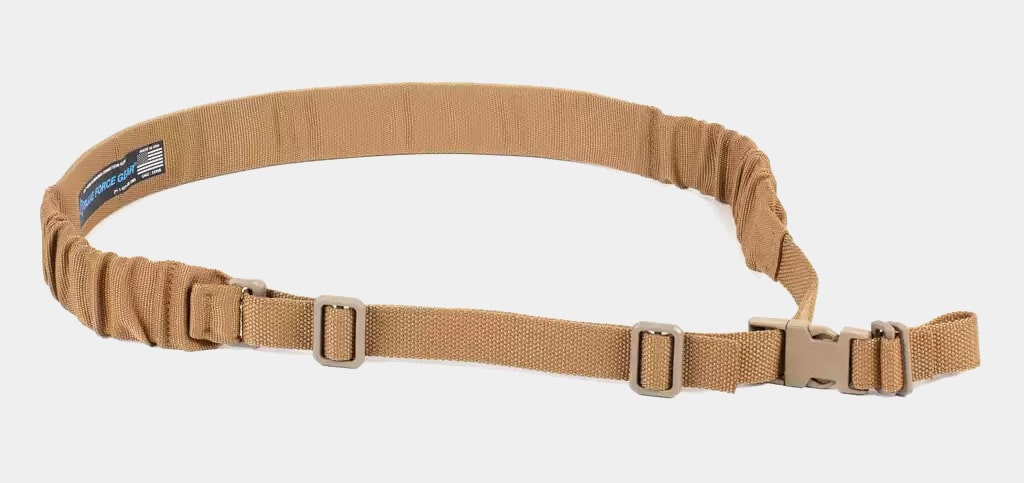There are about one million and a half options on the market when it comes to slings. It seems like everyone makes their own sling these days. That being said, it can make it hard to make a decision when it’s time to purchase one. On top of that, there are several options such as single-point, two-point and three-point slings. The single point is the one we are here to consider today.
So, what exactly is a single-point sling? Well, it’s a sling that forms a loop around your torso and then that loop attaches to the rifle. Hence the name “single point.” Allegedly, the single point is the choice of the Navy SEALs. However, none of us here are Navy SEALs, so I can’t tell you for sure what they use.
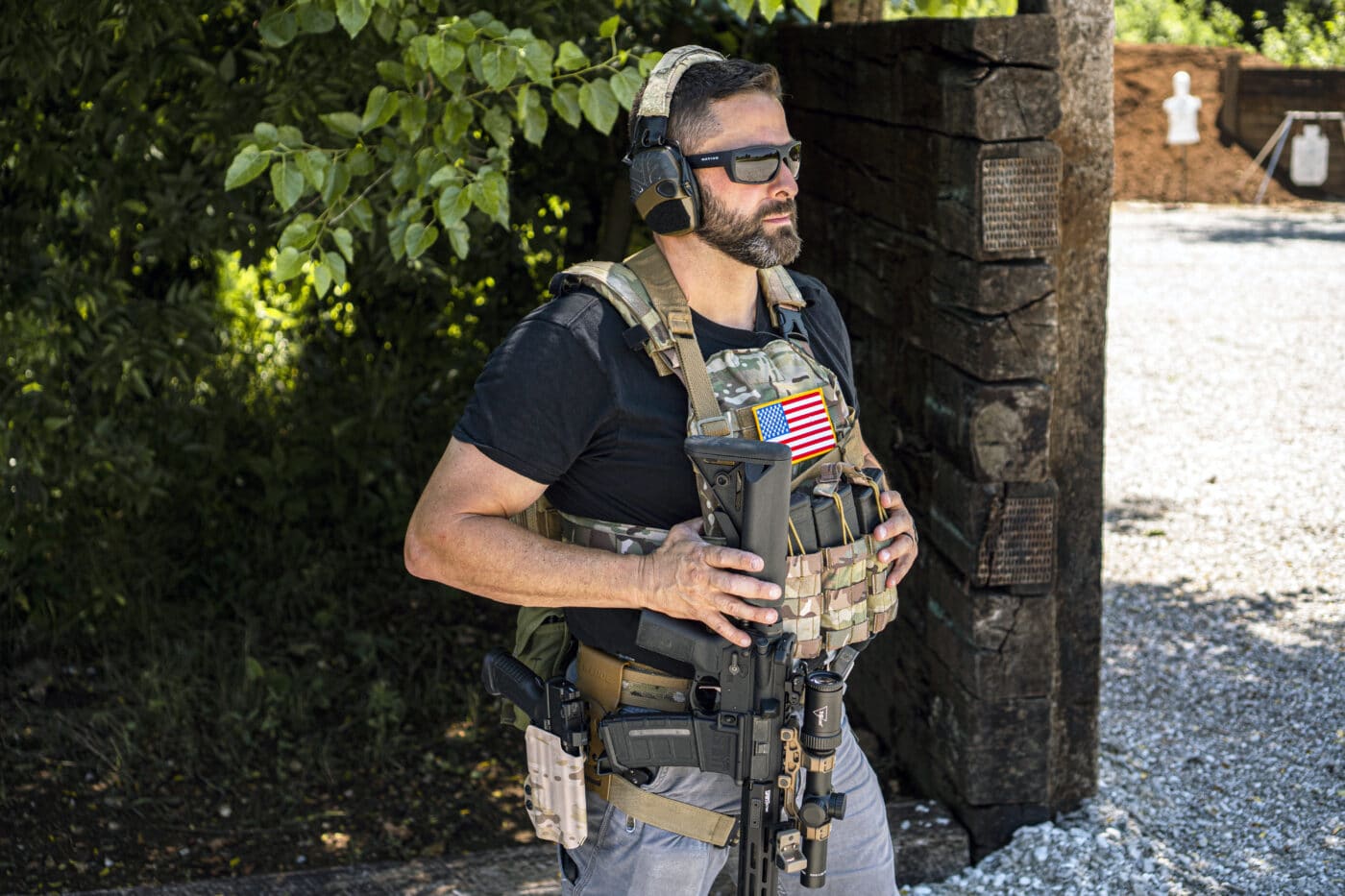
But, what we can do is our own analysis of the single-point sling and its benefits — and detriments. As with anything, there are always pros and cons. So, let’s dive in and take a look!
Single-Point Sling Pros
In our experience, the single-point sling has some great advantages over the other two types (two- and three-point slings), but it can also leave something to be desired in some cases.
The two pros to running a single point sling are:
- Shoulder transitions
- No sling tangle
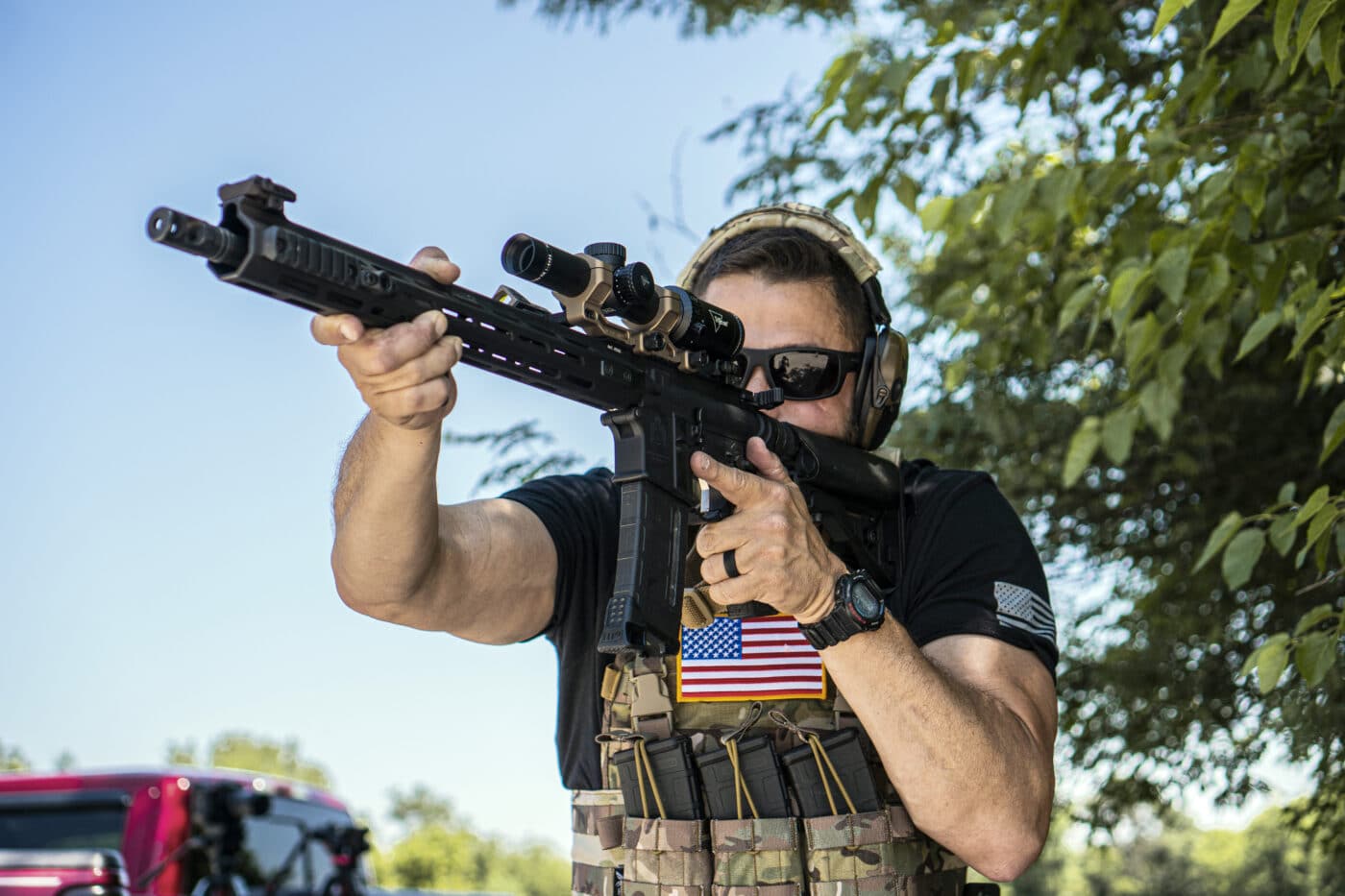
Shoulder Transitions
The first pro and the most obvious one: how easy it is to transition from shoulder to shoulder.
You can transition very easily because the rifle isn’t attached to much, so there is no extra slack to drag across from shoulder to shoulder. The shoulder-swapping ability of this sling for shooting from cover would make it great for tactical teams.
No Sling Tangle
The second biggest advantage of the single-point sling is going to be the fact that there is little to no chance for the sling to tangle in your gear. Since the single point keeps the gun so free and the sling really only forms a tight loop around your torso, you don’t have to swim out of it ever.
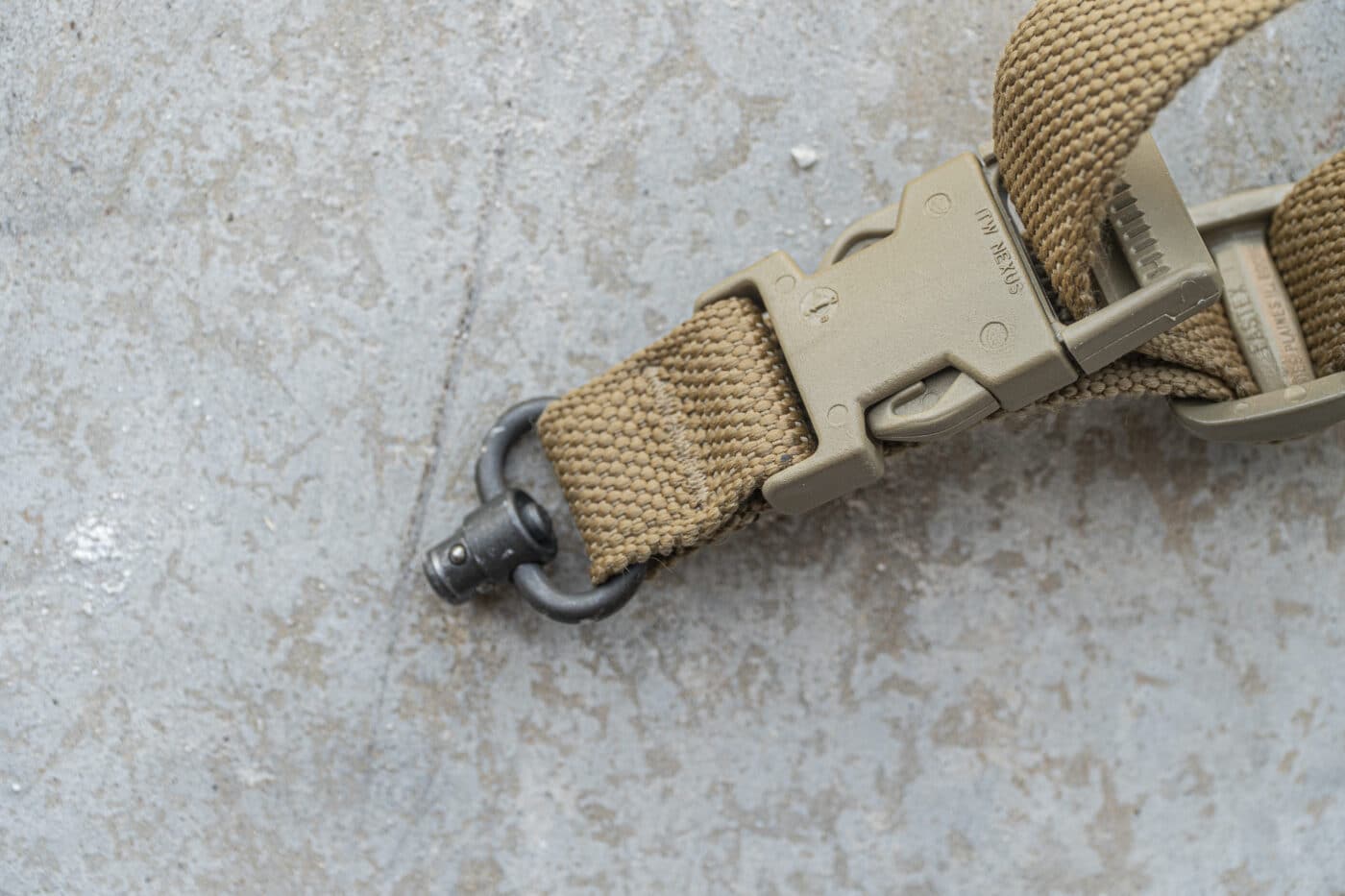
Usually, you have to free your arms up in sling to work your rifle better. With a single point, in most cases you don’t even have to take the sling off to set down your rifle as they often have QD methods to detach the rifle. This is super-fast and lets you keep your sling just like you want it.
Single-Point Sling Cons
Virtually no piece of gear is good in all applications. The single-point sling has a number of potential problems. The cons include:
- A long, hanging gun
- Minimal gun security
- Injury to the family jewels
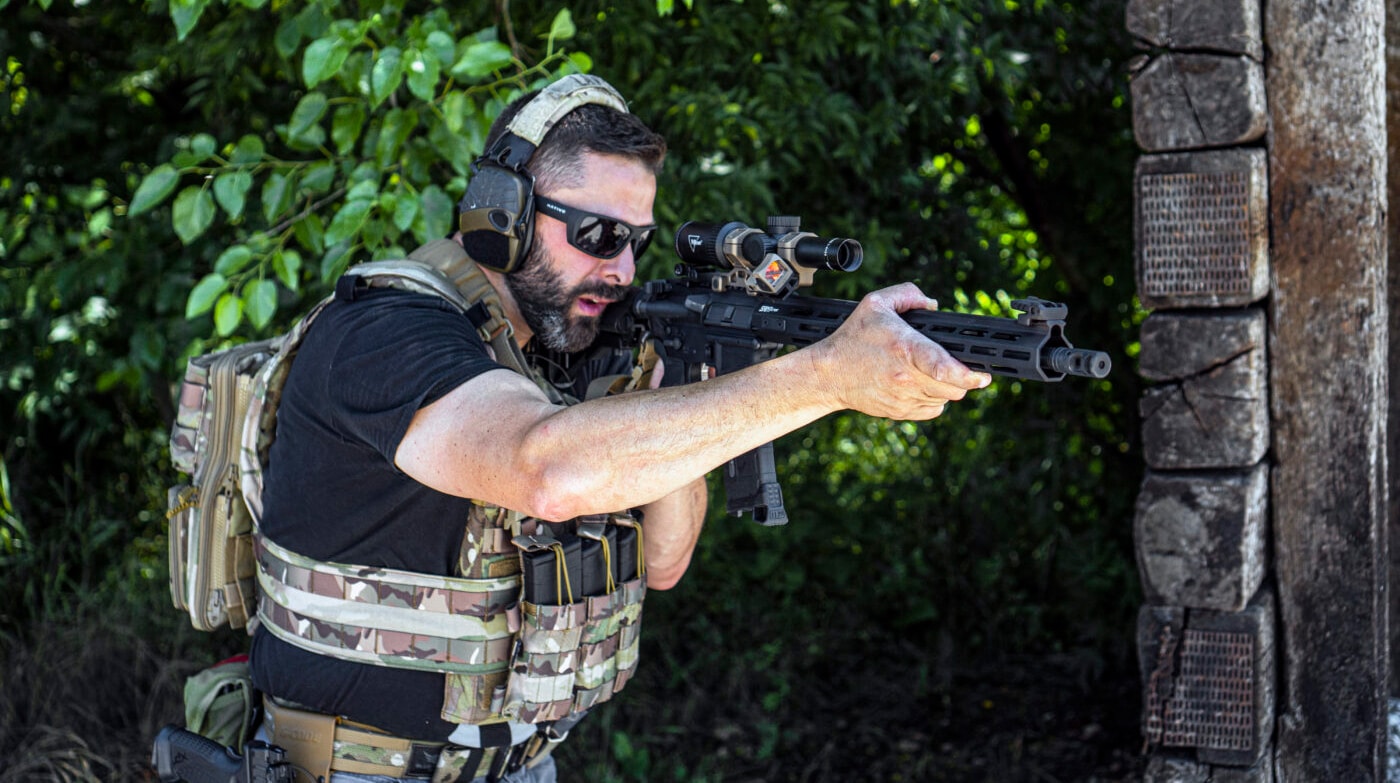
Low Hanging Gun
A big disadvantage of the single-point sling is that the rifle hangs too low. The buttstock will more than likely hit you right around the middle of the chest. This means you’ve got to be better at consistently hitting that shoulder pocket as you present your rifle onto the target.
Minimal Security
Perhaps the biggest issue with a single-point sling though is the fact that it gives no real security. If you’re an officer who has to detain a subject or make an arrest, as you take both hands off of the rifle it’s going to just hang and sway back and forth as your body moves around.
This makes it a pretty easy target for a threat to get their hands on your rifle. It also makes running quite difficult. You have to have at least one hand on the rifle so that it’s not flopping all over like a fish out of water.
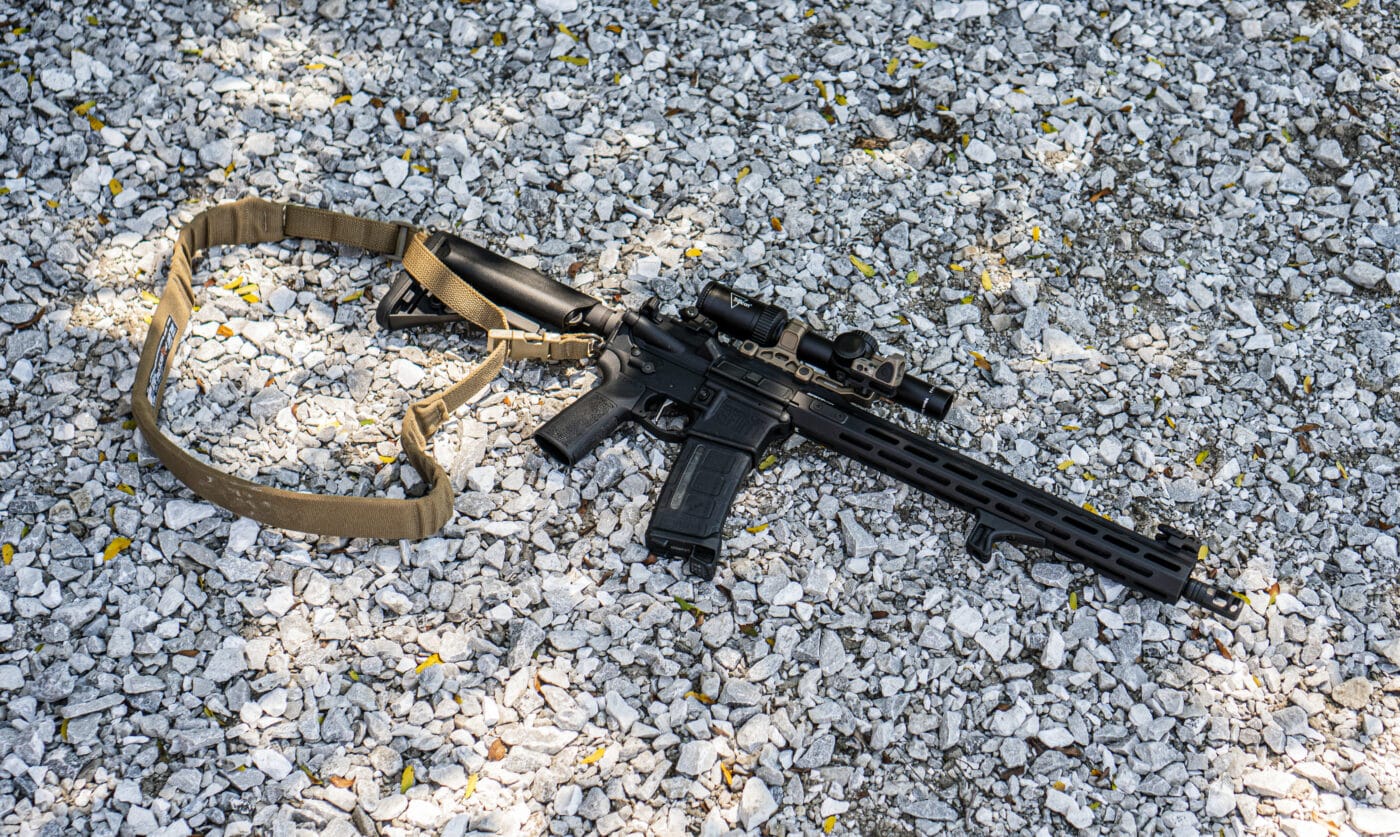
Grant had to use a single-point sling during his SWAT days and he shared a story about jumping off a service vehicle ready for action. The sling had some bounce thanks to its bungee section, so the carbine bounced down and then back straight up and impacted his chin. This wouldn’t have been nearly as likely to happen with either a two-point or a three-point sling.
Racking the Family Jewels
The third and final con is only a con for the men out there. When using a single point you can maneuver the weapon with great ease, but if you go to drop your rifle and grab your pistol you will soon find another con.
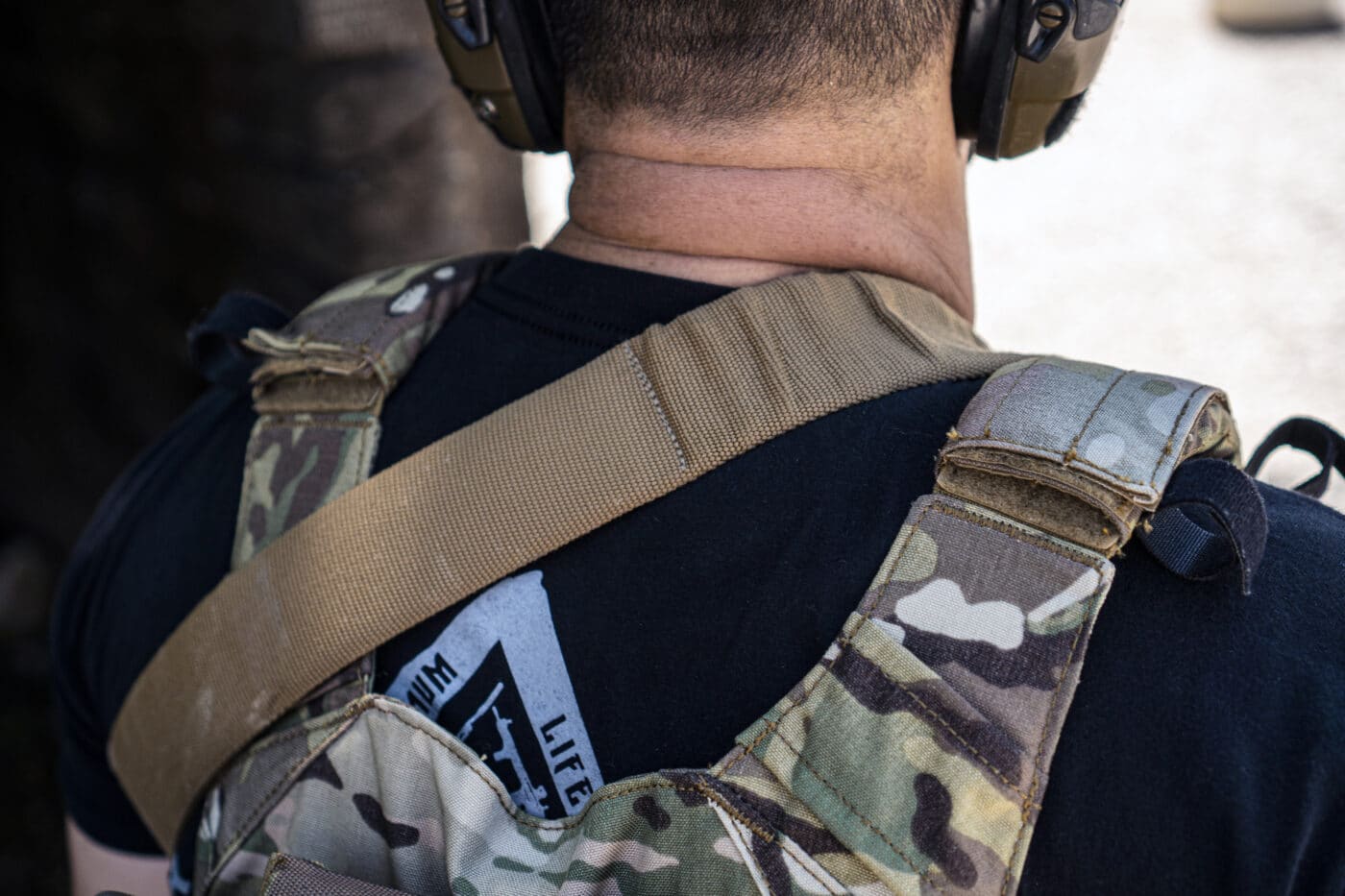
As that rifle falls it has no place to go but straight down and as it falls, I promise you it will find its way right between your legs. Racking yourself with your rifle adds insult to the injury. In a gunfight, ain’t nobody got time for a shot to the boys while trying to not get shot. Of course, with training, this can be somewhat overcome.
Conclusion
What’s the point of a single-point sling? Who is a single-point sling for? Well to put it as politely as possible, in our opinion a single point is best suited for operators who plan on taking no prisoners or making arrests.
In a gunfight where bullets are whizzing by and you are shooting from cover or clearing room after room, this is the best sling.
Most of the problems with the one-point sling are only realized when trying to do other actions. Things like climbing a ladder, rappelling, running etc. Those are the things where you will wish you had the versatility of a two-point sling. But more on that later…
Editor’s Note: Please be sure to check out The Armory Life Forum, where you can comment about our daily articles, as well as just talk guns and gear. Click the “Go To Forum Thread” link below to jump in!
Join the Discussion
Featured in this video
Continue Reading
Did you enjoy this video?

 110
110




